5 Most Unique Villages To Visit In India
By: Priyanka Maheshwari Fri, 02 June 2023 12:04:28
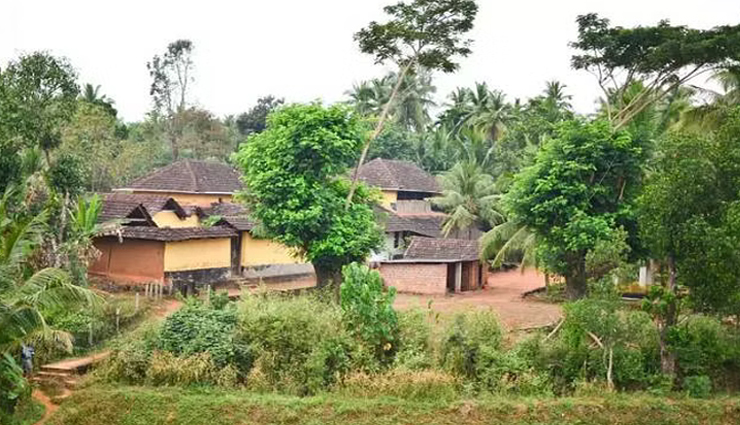
Villages in India are an integral part of the country's social fabric and represent the rural life and culture. With over 600,000 villages, India's rural areas are home to a significant portion of the population. These villages are characterized by close-knit communities, traditional customs, and agricultural practices that have been passed down through generations.
In Indian villages, you'll often find houses made of locally available materials like mud, thatch, or brick, reflecting the region's architectural style. Village life revolves around agriculture, with farming being the primary occupation for many residents. Farmers cultivate crops such as rice, wheat, sugarcane, cotton, and various vegetables, depending on the region's climate and geography.
Villages also have their unique socio-cultural dynamics. Community gatherings, religious festivals, and traditional ceremonies play a vital role in fostering social cohesion. Many villages have their own temples, where religious practices and rituals are performed regularly.
While infrastructure and access to basic amenities have improved in many villages over the years, challenges such as limited healthcare facilities, inadequate educational opportunities, and lack of modern amenities still persist in certain regions. Efforts are being made by the government and various organizations to bridge these gaps and empower rural communities.
India's villages are not only repositories of traditional knowledge and craftsmanship but also possess immense natural beauty. From picturesque landscapes to diverse flora and fauna, rural areas offer a serene escape from the bustling cities, providing visitors a glimpse into the country's rural heritage.
Overall, Indian villages are a vibrant tapestry of traditions, agriculture, and community life, contributing significantly to India's diverse cultural landscape.
India is known for its diverse and culturally rich villages that offer unique experiences to visitors. Here are a few notable villages you might consider visiting:
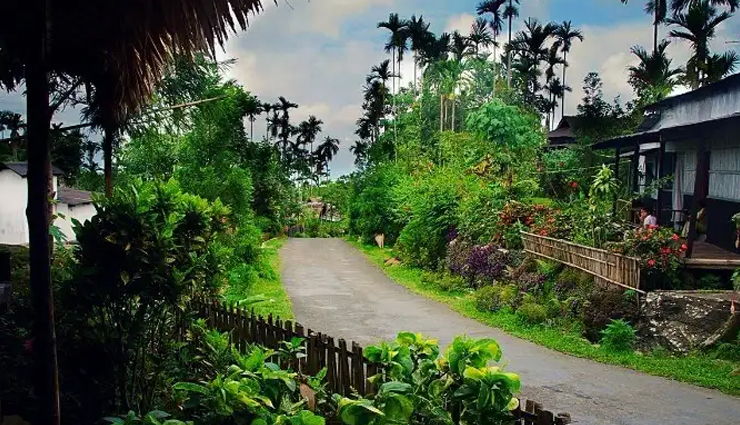
# Mawlynnong, Meghalaya
Mawlynnong, located in the East Khasi Hills district of Meghalaya, is a picturesque village known for its cleanliness and natural beauty. Here's some information about Mawlynnong:
Asia's Cleanest Village: Mawlynnong has earned the title of Asia's cleanest village. The locals take great care in preserving cleanliness and hygiene, making it a one-of-a-kind and inspirational place to visit. The streets are pristine, and every family actively contributes to the village's cleanliness.
Living Root Bridges: Meghalaya is well-known for its live root bridges, and Mawlynnong has one of the best examples. The Mawlynnong live root bridge is an amazing natural phenomena in which the aerial roots of rubber trees are managed and steered to construct a durable bridge. It's a sight to behold and provides a one-of-a-kind hiking experience.
Lush Greenery: Mawlynnong is nestled amidst lush green landscapes. The village is surrounded by dense forests, rolling hills, and charming waterfalls. The picturesque beauty of the region, combined with the refreshing air and tranquility, creates a serene ambiance.
Sky View Tower: Mawlynnong's Sky View Tower is a famous attraction that provides spectacular panoramic views of the hamlet and its surrounds. Climbing to the top of the tower allows tourists to take in the unspoiled beauty of the hamlet, surrounding forests, and Bangladesh's far plains.
Clean Village Living Experience: Mawlynnong allows tourists to experience the village's distinct way of life. Interact with the welcoming inhabitants, learn about their culture and traditions, and even stay in traditional bamboo guesthouses. This realistic experience allows you to enjoy rural living's simplicity and peace.
Mawlynnong Waterfall: The Mawlynnong Waterfall, also known as the Jingmaham Waterfall, is a picturesque cascade located near the village. The waterfall is surrounded by lush greenery and provides a refreshing retreat. It's an ideal spot to relax, unwind, and immerse yourself in nature's beauty.
Living Root Bridge Trek: Apart from the village's live root bridge, Mawlynnong acts as a starting point for hikes to other neighbouring living root bridges, such as Nongriat's famed double-decker root bridge. These hikes take you through stunning scenery, lush woods, and attractive towns, providing a look into the region's unique biodiversity.
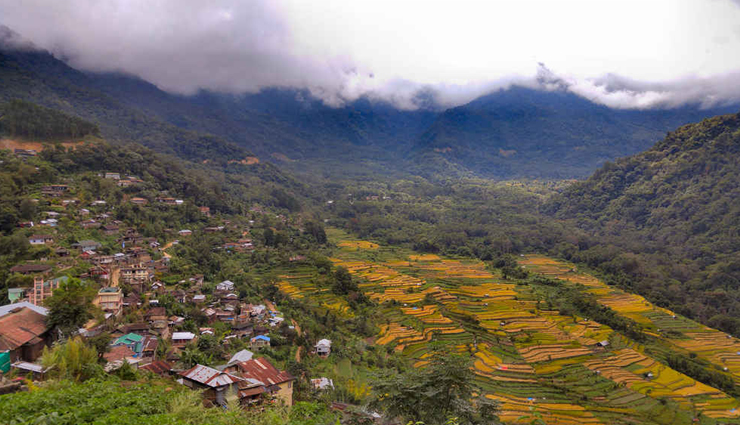
# Khonoma, Nagaland
Khonoma is a picturesque village located in the state of Nagaland, in northeastern India. Known for its rich history, cultural heritage, and stunning natural beauty, Khonoma offers a unique and immersive experience for travelers. Here's some information about Khonoma:
Historical Significance: Khonoma village is historically significant since it was previously a stronghold of the Angami Naga tribe. The town is well-known for its bravery and opposition to British colonial control. Visitors may learn about the village's intriguing history as well as the amazing stories of its inhabitants by exploring Khonoma.
Cultural Heritage: Khonoma is proud of its diverse cultural legacy, which is well-preserved and appreciated by the people who live there. The village's wooden cottages and stone pillars reflect traditional Naga architecture. Visitors may observe traditional rituals, cultural performances, and engage with the friendly inhabitants to learn about their distinct customs, traditions, and way of life.
Khonoma Nature Conservation and Tragopan Sanctuary: The village is recognized for its commendable efforts in nature conservation and is home to the Khonoma Nature Conservation and Tragopan Sanctuary. The sanctuary aims to protect the Blyth's Tragopan, a rare and endangered pheasant species. Birdwatchers and nature enthusiasts can explore the sanctuary and spot various bird species amidst the lush green forests.
Terraced Rice Fields: Khonoma is renowned for its beautiful terraced rice fields, which are a testament to the agricultural prowess of the village. These meticulously carved terraces extend across the hillsides, creating a captivating landscape. The best time to visit is during the harvest season when the fields are adorned with golden rice stalks.
Trekking and Nature Walks: Trekking and nature hikes are popular activities in Khonoma. The community is surrounded by beautiful hills and valleys, making it a perfect location for nature lovers and adventure seekers. Trekking routes take you through deep woods, flowing waterfalls, and tranquil landscapes, offering stunning vistas and an opportunity to learn about the region's biodiversity.
Local Handicrafts and Souvenirs: Khonoma is known for its intricate handicrafts and traditional Naga artifacts. Visitors can purchase unique handmade items like woven textiles, bamboo crafts, pottery, and traditional Naga jewelry as souvenirs to cherish the cultural heritage of the region.
Homestay Experience: To truly experience the essence of Khonoma, consider staying in a traditional Naga homestay. The villagers offer warm hospitality and provide visitors with an opportunity to live with a local family, savor traditional Naga cuisine, and immerse themselves in the daily routines and traditions of the village.
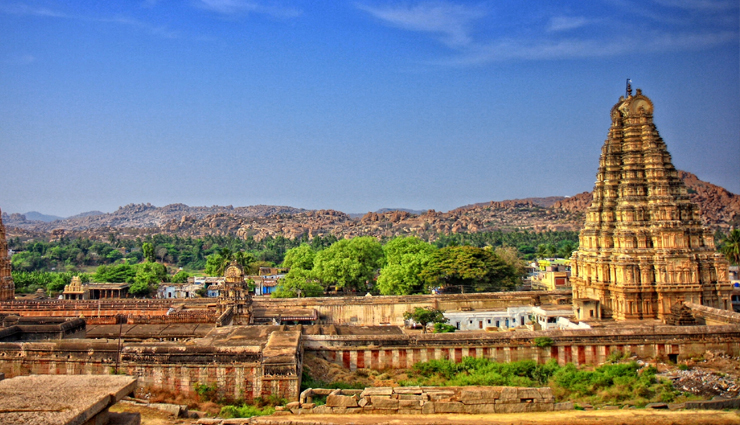
# Hampi, Karnataka
Hampi, in the Indian state of Karnataka, is a UNESCO World Heritage Site known for its rich history, architectural wonders, and breathtaking vistas. Here are some information about Hampi:
Historical Significance: Hampi was once the capital of the Vijayanagara Empire, one of the most prosperous and powerful kingdoms in South India during the 14th to 16th centuries. The ruins of Hampi are a testament to its glorious past and the architectural brilliance of the Vijayanagara rulers.
Architectural Marvels: Hampi is well-known for its magnificent ruins and historical structures. The Virupaksha Temple, dedicated to Lord Shiva, is the most distinctive and important temple in Hampi. The Vittala Temple complex, the Hazara Rama Temple, the Lotus Mahal, and the Elephant Stables are among important buildings. These architectural wonders highlight the Vijayanagara Empire's meticulous workmanship, elaborate embellishments, and majesty.
Hampi Bazaar and Matanga Hill: The Hampi Bazaar, near the Virupaksha Temple, is a lively marketplace where you can immerse yourself in local culture, buy for traditional handicrafts, and sample local foods. Matanga Hill, in Hampi, provides panoramic views of the whole region and is a favourite location for dawn and sunset viewing. Climbing Matanga Hill provides tourists with a stunning view of the Hampi ruins and the Tungabhadra River.
Riverside Ruins and Temples: Hampi is situated on the banks of the Tungabhadra River, and exploring the riverside ruins is a fascinating experience. The riverside area is dotted with ancient temples, including the Kodandarama Temple and the Achyutaraya Temple, which provide a serene and picturesque setting.
Hampi Utsav: The Hampi Utsav, also known as the Vijaya Utsav, is a large cultural celebration celebrated in November. The festival celebrates Hampi's unique heritage and customs via a variety of cultural performances, processions, music, dance, and puppet displays. It's a lively festival that draws both residents and tourists.
Rock Formations and Landscapes: Hampi's landscape is characterized by unique rock formations and boulder-strewn hills, adding to its charm and beauty. The landscape offers opportunities for rock climbing, bouldering, and exploration. The nearby areas of Anegundi and Hampi Island are also worth exploring for their natural beauty and rustic charm.
Coracle Boat Ride and Hampi Island: A coracle trip on the Tungabhadra River is a favourite Hampi recreation. These ancient circle boats provide a unique opportunity to see the river and take in the scenery. Across the river, Hampi Island is a serene refuge with guesthouses and restaurants, offering a peaceful getaway from the bustling Hampi metropolis.
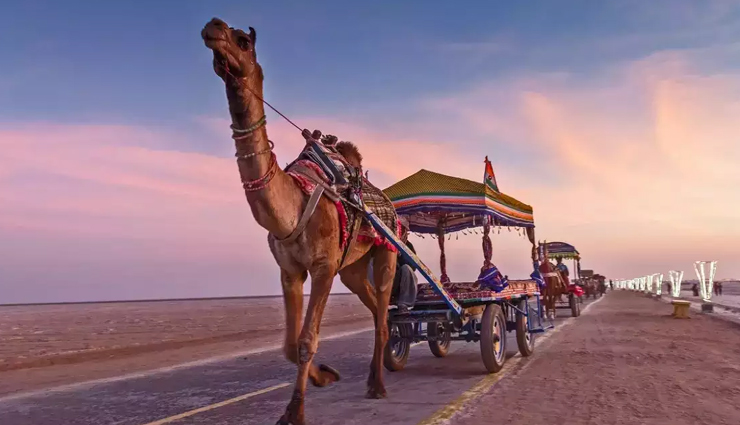
# Kutch, Gujarat
Kutch, located in the state of Gujarat, India, is a mesmerizing destination known for its vast salt marshes, unique culture, and vibrant handicrafts. Here's some information about Kutch:
The Great Rann of Kutch: One of the main attractions of Kutch is the Great Rann of Kutch, a vast salt marsh that stretches over thousands of square kilometers. The white expanse of the Rann creates a surreal landscape, especially during the full moon nights. Visitors can witness the enchanting beauty of the salt desert, indulge in various activities like camel safaris and cultural performances, and enjoy breathtaking sunsets.
Handicrafts and Textiles: Kutch is renowned for its exquisite handicrafts and textiles. The region is known for its intricate embroidery work, tie and dye fabrics, mirror work, and vibrant traditional textiles. Exploring the local markets and villages allows visitors to witness the craftsmanship of Kutchi artisans and shop for beautiful handcrafted souvenirs.
Cultural Heritage: Kutch is home to various indigenous communities, each with its distinct culture and traditions. The Rabari, Ahir, and Meghwal communities are known for their colorful attire, jewelry, and folk music and dance forms. Visiting the villages and interacting with the locals provides a glimpse into the rich cultural heritage of Kutch.
Wildlife Sanctuaries: Kutch is home to several wildlife sanctuaries and reserves. The Kutch Desert Wildlife Sanctuary is known for its diverse flora and fauna, including the endangered Indian wild ass. Other wildlife sanctuaries in the region include the Indian Bustard Sanctuary and Narayan Sarovar Sanctuary, which are havens for birdwatchers and nature enthusiasts.
Historical and Architectural Sites: Kutch has a rich historical legacy, with numerous historical and architectural sites worth exploring. The Aina Mahal and Prag Mahal in Bhuj are splendid examples of Indo-European architecture. The Kutch Museum in Bhuj showcases artifacts and exhibits related to the region's history and culture. The ancient ruins of Dholavira, a Harappan archaeological site, provide insights into the Indus Valley Civilization.
Mandvi Beach and Vijay Vilas Palace: Located near the town of Mandvi, the Mandvi Beach offers a serene coastal retreat. Visitors can relax on the sandy shores, indulge in water sports, and witness the magnificent Vijay Vilas Palace, a grand structure with intricate architecture and beautiful gardens.
Kutchi Cuisine: Kutch is known for its delectable cuisine, which includes a wide range of vegetarian and non-vegetarian dishes. The region is famous for its Kutchi Dabeli, a spicy street food snack, and mouth-watering traditional Gujarati thalis. Trying the local cuisine is a must-do experience when visiting Kutch.

# Cherrapunji, Meghalaya
Cherrapunji, in the Indian state of Meghalaya, is a region of extraordinary natural beauty and one of the wettest places on the planet. Here are some information about Cherrapunji:
Abundance of Rainfall: Cherrapunji receives exceptionally high rainfall throughout the year, making it a lush and green paradise. The region's unique geographical features, such as the Khasi Hills and the proximity to the Bay of Bengal, contribute to the heavy rainfall. Visitors can experience the awe-inspiring sight of cascading waterfalls and verdant landscapes due to the abundant precipitation.
Living Root Bridges: Cherrapunji is famous for its living root bridges, which are unique examples of bioengineering. These bridges are made by guiding the roots of the Ficus elastica tree to form sturdy natural structures over streams and rivers. The double-decker root bridge at Nongriat village is a popular attraction, requiring a trek through dense forests and picturesque landscapes.
Stunning Waterfalls: Cherrapunji has several beautiful waterfalls that stream down the slopes. With its clean waters crashing down from a considerable height, Nohkalikai Falls, one of India's highest waterfalls, is a breathtaking sight. Other noteworthy waterfalls are Seven Sisters Falls, Dainthlen Falls, and Kynrem Falls, each with its own captivating beauty.
Mawsmai Cave: Exploring the Mawsmai Cave in Cherrapunji is an adventure in itself. This limestone cave system is known for its unique rock formations, stalagmites, and stalactites. The caves are well-lit, making it easier for visitors to navigate through the narrow passages and witness the stunning natural formations.
Living Root Treehouses: Cherrapunji provides a once-in-a-lifetime opportunity to lodge in treehouses constructed of live roots. These eco-friendly lodgings allow tourists to immerse themselves in nature and get a close-up look at the wonderful surroundings. Staying in a live root treehouse is an unforgettable experience, complete with relaxing sounds of nature and panoramic views of the surrounding environment.
Eco-Parks and Gardens: Cherrapunji boasts several well-maintained eco-parks and gardens that showcase the region's flora and fauna. The Eco Park provides panoramic views of the valleys and waterfalls, while the Thangkharang Park offers stunning vistas of the Bangladesh plains. The Mawkdok Dympep Valley Viewpoint and the Krem Phyllut Park are also worth visiting for their scenic beauty.
Meghalaya's Living Root Bridges Festival: Cherrapunji celebrates the Living Root Bridges Festival, a celebration of the unique living root bridges and the ancient practises linked with their creation. The event celebrates the Khasi community's colourful culture, music, dancing, and food. It allows tourists to engage in local traditions while also experiencing the warmth of Meghalayan hospitality.





